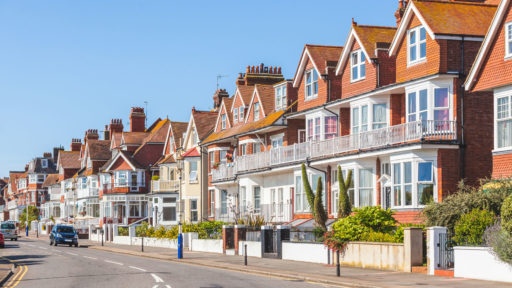Guide to reducing and insuring against malicious damage

Sadly, malicious damage to rental properties is a common problem that’s on the increase. Police forces in England and Wales currently investigate over 250,000 cases of criminal damage to property every year. For this reason alone, if you’re a landlord it’s vital to make sure you are covered in case of malicious damage to your rental properties.
That said, many landlords aren’t aware of how malicious damage insurance works, how they can get it or what it covers. In this guide, we help clarify what malicious damage is, how you can guard against it and how you can make sure you have the insurance you need.
- What is malicious damage?
- What is the difference between malicious damage and accidental damage?
- What do you do if a tenant has damaged your property on purpose?
- Can you evict your tenant for causing malicious damage?
- How do you prove malicious damage?
- Who pays for malicious damage to a rental property?
- Is malicious damage covered by insurance?
- What does malicious damage insurance cover?
- Will malicious damage cover get my property back to its original state?
- Can malicious damage insurance be included in any policy?
- How do you make a malicious damage insurance claim?
- Does malicious damage affect no claims?
- Finding the right malicious damage cover to suit your needs
What is malicious damage?
Malicious damage describes damage to your property that has been done on purpose (with ‘malicious intent’). Fundamentally, it’s a type of vandalism where the person doing the damage wants to cause destruction and harm.
What qualifies as malicious intent?
Malicious intent means that someone has acted wilfully or intentionally to cause harm, without legal justification.
What qualifies as criminal damage?
The Criminal Damage Act 1971 defines criminal damage as follows: “A person who without lawful excuse destroys or damages any property belonging to another intending to destroy or damage any such property or being reckless as to whether any such property would be destroyed or damaged shall be guilty of an offence.”
What is the difference between malicious damage and accidental damage?
Accidental damage is damage that is done unintentionally, or at the very least is done without malicious intent. Some good examples include:
- A child accidentally kicking a football through a window
- A tenant accidentally leaving a tap running, leading to water damage
- Spilling red wine on a carpet
- Tearing wallpaper when moving furniture or artwork
- A child drawing on walls with felt-tipped pens
By contrast, malicious damage is always intentional, as in these instances:
- Daubing graffiti on walls
- Pulling doors off their hinges
- Deliberately breaking furniture
- Smashing windows on purpose
- Making large holes in walls or ceilings
Malicious damage doesn’t necessarily have to be caused by tenants. It may be caused by their guests or even by burglars or vandals.
It’s also worth remembering that damage can be caused by normal ‘wear and tear’. This would include things like a worn carpet or scuff marks on walls and would not be covered by an insurance policy. Similarly, if it is deemed that the damage is due to ‘lifestyle’, for example if your tenant has left your property in a mess, this would not necessarily be covered up by your insurance.
What do you do if a tenant has damaged your property on purpose?
Landlords often first discover malicious damage as a result of regular property inspections. If this happens to you, you should, as a first step, write to the tenant asking them to repair the damage. If the damage amounts to less than £10,000, you can tell the tenant you intend to take them to the ‘small claims court’ unless they repair the damage within a specified time (note that the £10,000 small claims limit applies to England and Wales. In Scotland there is a ‘simple procedure’ for claims under £5,000 and in Northern Ireland there has been a small claims limit of £5,000 since 3 October 2022).
If the tenant fails to repair the damage within this time, you can then take the case to the court. You can do this online. Alternatively, you could use a mediation service if you feel it would be successful.
Finally, at the end of the tenancy you can take money from the tenant’s deposit to pay for the damage, although the deposit may not cover the full cost of repairs depending on the damage sustained. Also, if you do this, your tenant has the right to see any receipts and is also allowed to dispute any costs.
Can you evict your tenant for causing malicious damage?
If a tenant has damaged your property on purpose, you may be able to evict them for breaching their tenancy contract. To do this, you’ll need to issue the tenant with a Section 8 notice under the Housing Act 1988. However, we strongly recommend that you get legal advice before evicting a tenant.
In cases where your property is unoccupied, malicious damage may have been caused by squatters. There are specific procedures for evicting squatters. These normally include applying for an interim possession order or a claim for possession, depending on how long it is since you discovered the squatters had moved into your property.
How do you prove malicious damage?
The law relating to malicious damage can be complex, as you can see from the legal guidance issued by the Crown Prosecution Service. However, if you believe a tenant or other person(s) has caused malicious damage to your property you should first report it to the police and get a crime reference number. You will also need this for any future insurance claim. You should also take date-stamped photos of any damage. Ideally, you should have a property inventory with ‘before’ pictures for comparison.
Malicious damage is classed as vandalism in the eyes of the law and tenants can be prosecuted. Tenants that are found guilty could face a £2,500 fine if the damage they cause is less than £5,000. Tenants can also face up to three months in prison. If tenants cause significant damage costing more than £5,000, the fine can rise to £5,000 and lead to imprisonment for up to six months.
Who pays for malicious damage to a rental property?
Ideally, the person who caused the damage should pay to put the damage right. If a tenant, a member of their family, or their guest causes malicious damage you are within your rights to ask them to pay for the work to put it right.
However, if the tenant fails to pay you may have to deduct the cost of the damage from their deposit or take them to the small claims court. This costs money and you should only do it if you believe the tenant has the means to pay.
For maximum peace of mind, it’s best to have adequate insurance to cover you against malicious damage.
Is malicious damage covered by insurance?
Most landlord insurance policies will cover malicious damage as part of your buildings or contents cover if it’s caused by burglars breaking in or vandalising your property. But some policies will stop there and won’t cover you for damage done by tenants (or their guests). If your landlord insurance doesn’t cover malicious damage by tenants as standard, you should be able to add cover to your policy as an optional extra.
What does malicious damage insurance cover?
Some policies will pay for malicious damage caused by anyone with a legal right to be on or in your property (like tenants and their visitors). For instance, landlords covered by Alan Boswell Group can rest assured that malicious damage by tenants is a standard feature in our policies.
Your policy documents should clearly set out what’s covered, along with any other specific terms. This includes any claim criteria – for example, some insurers will only proceed with your claim if tenants passed their initial reference checks and you have an Assured-Shorthold Tenancy (AST) in place.
Will malicious damage cover get my property back to its original state?
Your policy should cover the cost of damage but there may be limits depending on the terms and conditions set out by your insurer. For example, contents may only be covered up to a certain value and may not provide you with a like-for-like replacement.
You’ll also need to consider the excess you’ll need to pay when deciding whether to make a claim.
Can malicious damage insurance be included in any policy?
If you’re a landlord with commercial property or you have business premises, it’s perfectly possible to include malicious damage cover with your commercial landlord insurance. This is often an optional extra, so always talk to your insurer to make sure your policy meets all your needs.
How do you make a malicious damage insurance claim?
Your policy documents should set out the process for making a claim.
Depending on the nature or extent of the damage, your insurer may send someone out to assess your property once you have a crime reference number. If that’s the case, don’t be tempted to tidy up or throw anything away. Leave everything as it is until your insurer tells you otherwise. You should also be sure to take photos.
Similarly, if you need to carry out repairs for malicious damage, don’t rush in. Some insurers will have a list of preferred tradespeople so check with them first. Using someone else could invalidate your claim.
Does malicious damage affect no claims?
Landlord insurance policies differ from household policies in that they don’t tend to offer a ‘no-claims discount’. If you did claim for malicious damage, you would be likely to pay a higher premium when you renewed your policy, although any increase would depend on the value of the claim. That said, it’s better to make a claim when you need to – insurance is designed to help minimise your losses in the event of malicious damage.
Finding the right malicious damage cover to suit your needs
Being a landlord can be stressful, even without the worry of having to deal with malicious damage – either because of problems with tenants or through attempted burglary. But having a landlord insurance policy you can rely on can mitigate the worry and stress of dealing with the unexpected.
At Alan Boswell Group, not only do we provide you with award-winning policies, we also understand that landlords have different needs and we’ll tailor a policy to suit you. To get an idea on the support and cover we provide, take a look at our landlord hub, where you can also access landlord advice and guidance. Alternatively, you can speak to an expert directly by calling the team on 01603 216399





